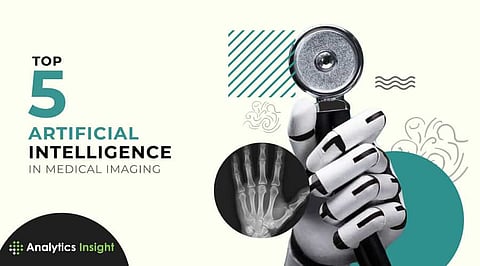

Artificial Intelligence has made a great impact in the medical care system because of its powerful data analytics tools and filtration of valuable data from the unstructured pile of information. AI has a vital role to play in clinical decision-making and connecting patients with resources for self-management. In the healthcare industry, medical imaging brings in a great quantity of pixelated data taken from X-rays, CT scans, or MRIs. Using AI to analyze these high resolutions of imaging would help the radiologists and doctors to be more productive in less time and improve their accuracy. In the medical field, time is a valuable matter. If a patient is not given the right medicine at the right time, their lives can be in danger.
The measurement of the structure of the heart helps doctors identify the existence of any kind of abnormality. After identification, they decide what type of operations and medications would be suitable. Using AI in analyzing the structures from the X-Ray images would save a lot of time. There would also be less chance of diagnostic error. Identifying elements like Cardiomegaly or left atrial enlargement would become very easy with the help of AI. This would lead the doctors to make quick decisions on what to be done next. Applying AI in imaging data would help in the identification of the thickening of some of the muscle structures like the left vertical wall.
It would also supervise the changes in blood flow through the heart as well as the associated arteries. Automatic quantification of the pulmonary artery flow saves a lot of time for the interpreting physicians, as it eliminates the detection errors of manual measurements. It also provides structured quantitative data to be used for further studies.
Sometimes fractures and soft tissue injuries may be invisible to the human eye. Using AI tools can help doctors to be more accurate and confident about their diagnosis. Human diagnosticians generally look at trauma-related imaging by focusing first on their immediate clinical concerns. During this, sometimes fractures can be overlooked. However, a patient with head and neck trauma can be accurately assessed for odontoid fracture, which is a type of fracture in the cervical spine by using an AI radiology tool.
Identification of amyotrophic lateral sclerosis (ALS) and primary lateral sclerosis (PLS) highly depends on the medical imaging system. Radiologists often come up with false positives that can be easily avoided by the use of AI. Manual segmentation and quantitative susceptibility mapping (QSM) assessments of the motor cortex are generally difficult. Using AI would help a lot with the research. It would also assist in the development of a promising imaging biomarker.
Pneumonia and pneumothorax are often identified by radiologists through imaging. When it is manually done, if the patient has pre-existing lung conditions, such as malignancies or cystic fibrosis, the identification may face difficulties. Other than that, subtle cases of pneumonia as those projecting below the dome of the diaphragms on front chest radiographs can be often overlooked.
However, the use of AI would accurately identify them reduce the time of diagnosis. AI can also help in identifying high-risk patients when they are suspected of pneumothorax. It is the introduction of air pockets between the lung and chest wall that can be the result of trauma or invasive interventions. If medication is not given at the right time, the condition can be deadly. AI would be able to identify the degree of severity of the pneumothoraces.
In cases of breast cancer or colon cancer, medical imaging is often used for diagnosis. For breast cancer, the microcalcification of tissue can be invisible or difficult to be identified as malignant. If it is falsely identified, it can lead to unnecessary testing as well as treatments. If it is missed, the stage of cancer may be advanced. AI would help to improve the accuracy and use the features of quantitative imaging to more accurately categorize microcalcifications by the level of suspicion for ductal carcinoma. It would potentially decrease the rate of unnecessary benign biopsies.
Join our WhatsApp Channel to get the latest news, exclusives and videos on WhatsApp
_____________
Disclaimer: Analytics Insight does not provide financial advice or guidance. Also note that the cryptocurrencies mentioned/listed on the website could potentially be scams, i.e. designed to induce you to invest financial resources that may be lost forever and not be recoverable once investments are made. You are responsible for conducting your own research (DYOR) before making any investments. Read more here.
